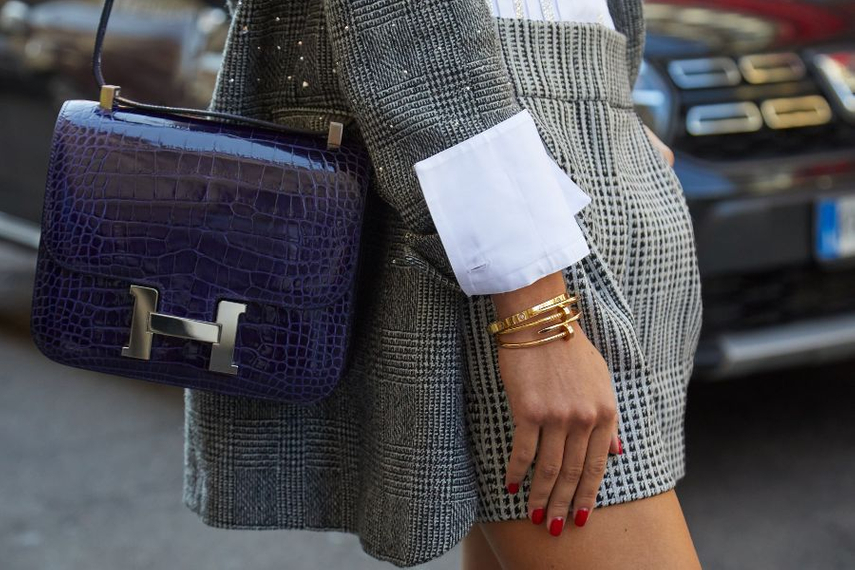
Think luxury and your mind goes to superior quality in items such as wines, handcrafted products, and designer goods, symbolising exclusivity, sophistication, and association with the affluent. However, the global scenario is evolving. The emergence of economies like India and China is reshaping the landscape of luxury, expanding it beyond the realm of a select few privileged individuals.
In India, luxury historically served as a marker of social class. However, economic reforms in 1991 ushered in a globalised era, fostering growth and opportunity. This birthed the "Great Indian Middle Class" whose journey with luxury began with accessible "bridge-to-luxury" brands like Gap and Mango. These brands provided a stepping stone towards more established luxury brands. As noted in their book by Radha Chadha and Paul Husband, The Cult of the Luxury Brand: Inside Asia's Love Affair with Luxury, prior to 2007, the chasm between mid-range and super-luxury brands was vast, with the ecosystem for luxury goods still in its infancy.
Since that time, India has experienced notable growth, prompting numerous individuals to transition away from mass brands. The country's economy has been consistently thriving in recent years, driving a considerable portion of the population towards elevated socioeconomic positions and greater disposable income.
According to Firstpost, the number of millionaires in India is projected to surge by 69% by 2027, with over 19,000 individuals boasting an ultra-high net worth exceeding $30 million.
Millennials and Gen Z are also making their mark on the luxury market. A 2024 Goldman Sachs report highlights the dramatic rise in India's affluent class, with the number of people earning over $10,000 annually jumping from 24 million in 2015 to 60 million in 2023. This translates to 4.1% of India's population now entering the premium goods space, potentially propelling the Indian luxury market to a staggering $200 billion by 2030—a 3.5-fold increase according to Bain & Company.
The evolving luxury journey: From status symbols to a way of life
According to Chadha and Husband, the Indian consumer's relationship with luxury can be mapped across various life stages. It could start with the "subjugation" phase, followed by "the start of money," "the show-off," "the fit-in," and ultimately, "the way of life." Researchers in 2007 located consumers at the "start of money" stage.
This tells us that today's consumers might be somewhere between "show-off" and "fit-in," where simply owning any luxury brand is no longer enough. With growing brand awareness, consumers may seek to stand out through even more exclusive labels to differentiate themselves in an already brand-conscious social circle.
The Indian consumer is very different from luxury consumers elsewhere. They value a unique blend of quality and prestige with practicality. For instance, design or craftsmanship alone might not suffice when it comes to Indian jewellery purchases. Given the cultural significance of gold as a readily-convertible asset, factors like metal composition and resale value significantly influence buying decisions. Similarly, luxury car buyers might prioritise mileage in their Mercedes or BMWs, prompting these brands to cater to such preferences.
While some Indian consumers revere western brands more than homegrown ones, this perception has its limits. The influx of western luxury houses copying Indian designs and craftsmanship can backfire. For example, a brand like Hermes or LV venturing into sarees can be seen as less luxurious compared to established Indian heritage brands like Sabyasachi.
(Left) Hermes' Saree Launch in India, 2008; (right) Sabyasachi's sarees.
Understanding these preferences can help in distinguishing luxury brands without diminishing their aspirational value and authenticity. Identifying the needs of the Indian consumers within the luxury space is important, as Indian consumers would likely go to Indian brands for ethnicity, as they offer superior and enviable craftsmanship and status elevation.
Gen-Z consumers and the strong attraction to western brands
No discussion on the Indian luxury market is complete without acknowledging Gen Z. Although they may not currently have the same high level of financial stability as earlier generations, their continuous online presence nurtures a distinct interest in luxury brands.
Their language and expressions are peppered with references to luxury names, from "LV di Jean" (LV Jeans) to "Gucci da Swag" (Gucci-like Swag) and "Jimmy Choo le lu 40 lakh de" (I'll buy you 40 grand Jimmy Choos). Jass Manak in his song ‘Prada’ (below) is all praise for his lover’s Prada sunglasses and Bentley rides.
Many Indians, including millennials and post-millennials are echoing a similar sentiment. Unlike their predecessors, they prioritise investing in quality brands as a symbol of fitting into a luxurious lifestyle that grants access to their dreams of luxury. The prevailing mindset is one of "if I want it, I get it."
The Indian luxury market is undergoing a significant transformation. Fuelled by a growing affluent class and evolving consumer preferences, it presents a fertile ground for both established and emerging luxury brands. Understanding the unique values and aspirations of the Indian consumer will be key to success in this dynamic market.
Himani Pundir is an associate at Quantum, India.



.jpg&h=334&w=500&q=100&v=20250320&c=1)



.png&h=334&w=500&q=100&v=20250320&c=1)
.png&h=334&w=500&q=100&v=20250320&c=1)


.png&h=334&w=500&q=100&v=20250320&c=1)




.jpg&h=268&w=401&q=100&v=20250320&c=1)
.jpg&h=268&w=401&q=100&v=20250320&c=1)
.png&h=268&w=401&q=100&v=20250320&c=1)

